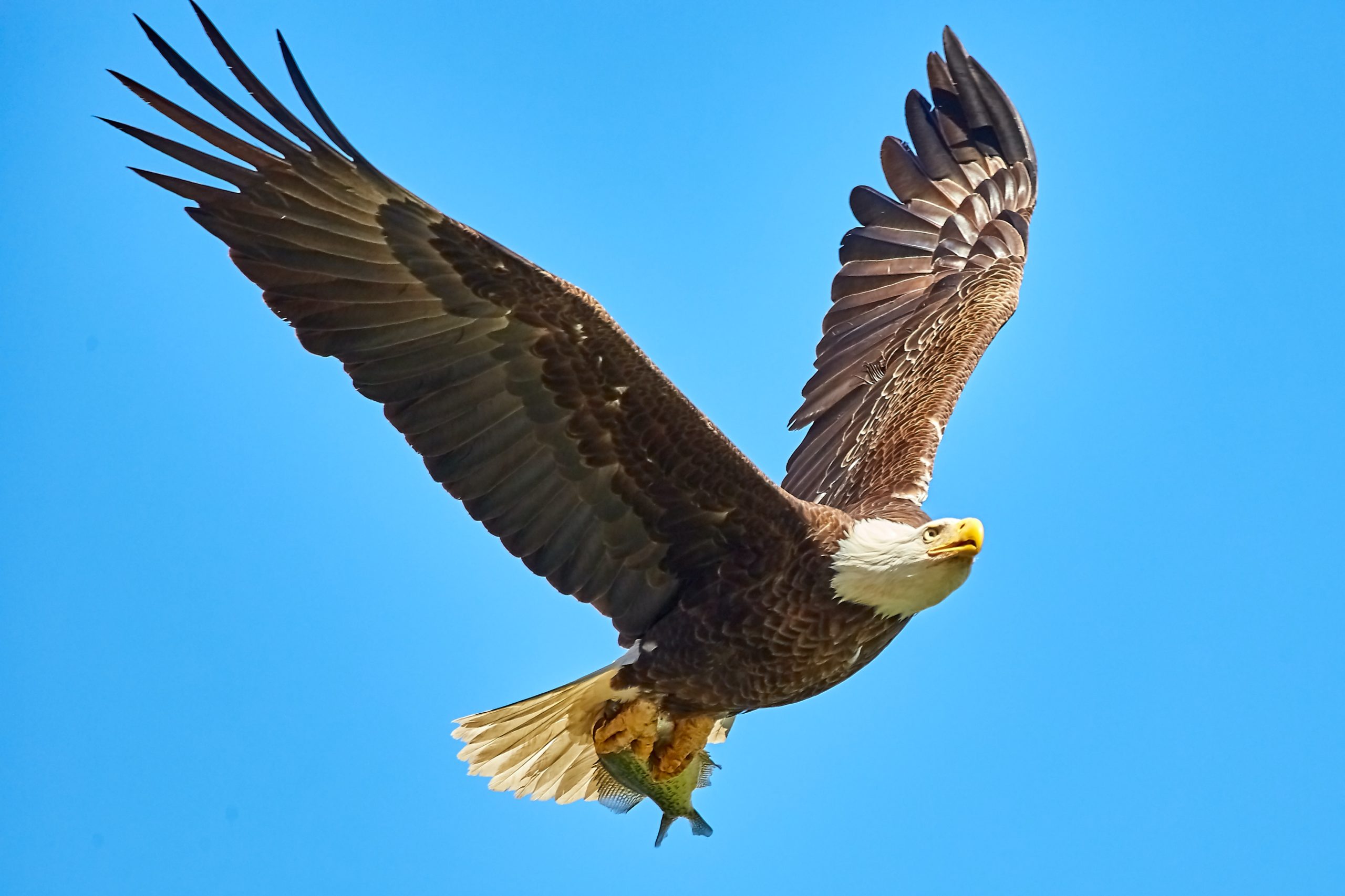Eagles are magnificent birds of prey that have captured the imagination of humans for centuries. These birds are known for their sharp talons, powerful wings, and incredible eyesight. But how much do we really know about the life cycle of an eagle? In this article, we’ll take a closer look at the stages of an eagle’s life, from egg to majestic hunter.
Egg Stage: The life cycle of an eagle begins with the egg. Female eagles typically lay between one and three eggs, which are incubated by both parents for around 35 days. During this time, the parents take turns keeping the eggs warm and protecting them from predators.
Hatchling Stage: Once the eggs hatch, the young eagles, or eaglets, are born blind and helpless. They rely on their parents for food and warmth and spend the first few weeks of their lives huddled together in the nest. As they grow, their eyesight improves and they become more active, flapping their wings and practicing their hunting skills.
Fledgling Stage: Around 10-12 weeks after hatching, the eaglets are ready to leave the nest and take their first flight. This stage is known as the fledgling stage, and it is a critical time for the young eagles. They must learn to fly and hunt on their own, while avoiding predators and other dangers.
Juvenile Stage: After leaving the nest, the young eagles enter the juvenile stage. This is a period of rapid growth and development, as the birds continue to hone their hunting skills and explore their environment. Juvenile eagles are easily recognizable by their mottled brown and white feathers, which gradually give way to the distinctive adult plumage.
Adult Stage: At around five years of age, eagles reach maturity and enter the adult stage of their life cycle. At this point, they have developed the skills and instincts necessary to survive in the wild and are fully equipped to hunt and defend themselves. Adult eagles are known for their striking white heads and tails, which are a symbol of their status as powerful and majestic hunters.
Conclusion: The life cycle of an eagle is a fascinating and complex process that spans several stages of development. From the vulnerable hatchling stage to the majestic adult stage, eagles undergo a remarkable transformation that reflects the resilience and adaptability of these remarkable birds. By studying the life cycle of eagles, we gain a deeper appreciation for the wonders of nature and the power of evolution to shape the world around us.




